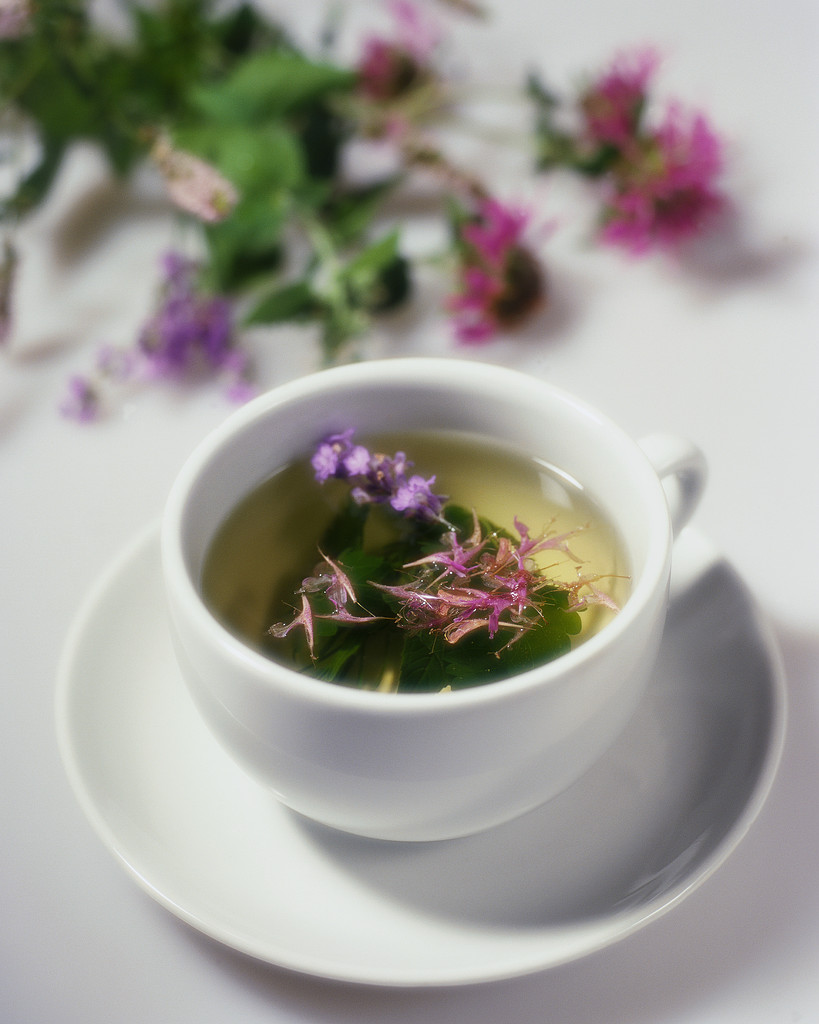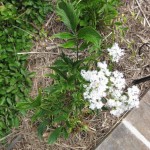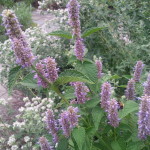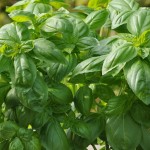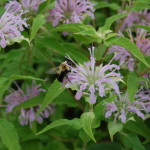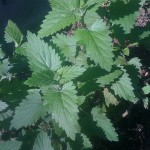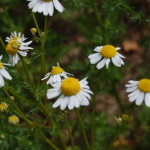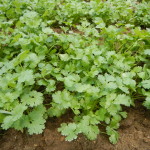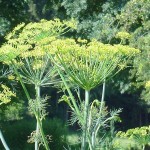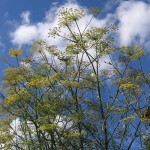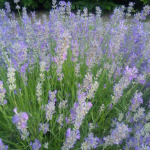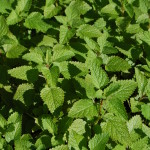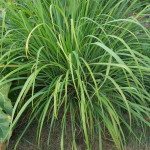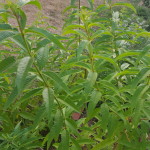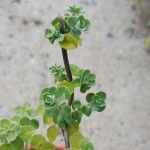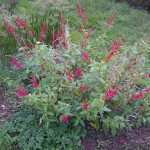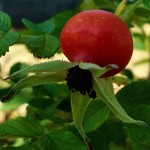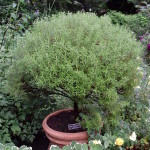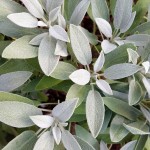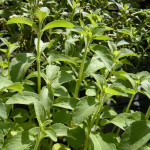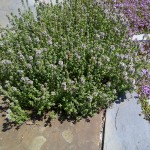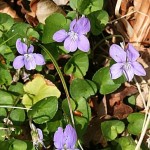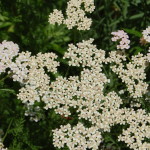Herbal tea lovers rejoice! Your herb garden is also your tea garden. You can grow your own teas and create your own unique blends.
Anise – Pimpinella anisum an annual from the Mediterranean region reaching a height of three feet. Its characteristic licorice flavor is found in products as varied as black jelly beans and Sambuca. Anise is easy to grow from seed. It’s best to direct sow your seeds because the plants have a long tap root and dislike being transplanted. Plant it in full sun and don’t over-water. Anise prefers dry conditions.
For your tea, you will be using the seeds. Anise has a beautiful flower similar to Queen Anne’s Lace making it easy to spot the seeds when the flower begins to die. To harvest, simply cut the flower stem and then turn it upside down and shake slightly so that the seeds spill out. It’s helpful if you do it on a white piece of paper to make the small black seeds easier to see. Leave them out on the paper for 24 to 48 hours to dry.
Anise Hyssop – Agastache foeniculum a member of the mint family, but not as invasive, anise hyssop is native to the North American prairies where it can reach a height of four feet. It is perennial and hardy through zone 4. The flowers attract bees and butterflies. Allow the flowers to go to seed and watch the goldfinches flock to your garden to feast on the seeds.
Anise hyssop seeds can be started indoors or direct sown in your garden. Do not cover the seed. It needs light to germinate. Once the plants are established, do not over-water. Anise hyssop prefers dry conditions. It likes sun but can tolerate a little shade.
Use the leaves, fresh or dried, for a delightful anise-flavored tea.
Basil – Ocimum basilicum originally from India, it is an annual growing to about 18 inches tall. Basil is easy to grow from seed. The seeds should be started indoors about 8 weeks before your last frost date. Plant the seedlings out when night time temperatures are above 60°F. Basil likes lots of heat, lots of sun and lots of water. Be vigilant about removing the flowers. Once the plant flowers, the leaves start to lose their flavor.
Cinnamon basil and lemon basil are the two most common basils used for tea. The leaves can be used fresh or dried.
Bee Balm – a native of eastern North America and a magnet for bees, butterflies and hummingbirds, it comes in four varieties. Monarda didyma, with its familiar red flower, Monarda fistulosa, the so-called “wild bergamot” sporting lavender flowers and Monarda citriodora and Monarda pectinada, with fewer, lavender to lilac flowers, both known as “lemon mint”. Monarda was extensively used by Native Americans for its antiseptic properties. It is a natural source of thymol used in mouthwashes. The early colonists called it “Oswego tea” and drank it when the familiar black tea was scarce or too expensive.
Bee balm is a perennial hardy through zone 4. A member of the mint family, it spreads but is not invasive. Depending on the variety, bee balm grows between two and four feet tall. It prefers full sun but can tolerate some shade. Bee balm is easily grown from seed. Direct sow it in your garden, pressing the seed firmly into the soil but don’t cover it. It needs light to germinate. Keep it well watered but not wet. Clumps should be divided every three years as the centers die out.
The leaves can be used fresh or dried. The taste has been described as a combination of spearmint, peppermint and oregano. The lemon mint varieties have an added lemon flavor.
Catnip –Nepeta cataria native to southern Europe and southwestern Asia, it has become naturalized throughout Europe and North America. It’s a perennial that is hardy to zone3 and grows to a height of 3 feet. It is a member of the mint family but is not invasive.
Catnip seeds should be directly sown in your garden in either the fall or the spring and lightly covered with soil. Keep the soil moist but not wet. Catnip prefers full sun but like most mints, can tolerate some shade.
The leaves can be used fresh or dried for a soothing, minty tea.
Chamomile – native to central Europe and central Asia, it has become naturalized throughout Eurasia and North America. The annual, Matricaria recutita ,known as German chamomile is the most commonly used for teas. The perennial, Chamaemelum nobile or Roman chamomile has a more bitter flavor. Chamomile tea is very popular but should be used judiciously. It can cause uterine contractions which could lead to miscarriage so it is not recommended for pregnant women or nursing mothers. Anyone who is allergic to ragweed will have the same sensitivity to chamomile with the same symptoms.
Chamomile seeds should be sown indoors 6 weeks before your last frost. Don’t cover them. They need light to germinate. After your last frost, transplant your seedlings into your sunny garden and keep them well-watered. Chamomile will reach a height of 3 feet. Harvest the daisy-like flowers early in the morning after the dew has dried and bring them indoors to dry.
Chamomile makes a soothing, relaxing tea.
Cilantro (Coriander) – Coriandrum sativum a member of the carrot family and a native to the regions surrounding the Mediterranean including southern Europe, north Africa and southwestern Asia. It is used in cuisines worldwide. Cilantro, an annual, is a cool season plant. It will bolt, or flower, when the soil temperature rises above 75°F. You can delay flowering a few weeks by heavily mulching the plants to keep the soil cool.
Cilantro can be started indoors as long as you can provide lots of light or direct sown in your sunny garden after your last frost date. You can begin harvesting the leaves for your tea when the plants reach six inches in height. To harvest the leaves, you can either pull up the entire plant or cut the stems close to the ground, starting with the oldest, outside ones. Pruning your cilantro like this encourages new growth. You should be able to do this 2 to 3 times before the plants bolt.
The leaves should only be used fresh. They lose their flavor when dried. Tea made from fresh leaves has a citrus flavor.
Dill – Anethum graveolens Like cilantro, dill is an annual and a member of the carrot family. It is native to southern Russia and a staple in Russian and eastern European cuisines. Mature plants vary height from 2 to 4 feet depending on the variety.
Dill is easily grown from seed. In fact, it readily reseeds itself in your garden. Plant your seeds in your sunny garden after your last frost date and lightly cover them with soil. Be sure to plant them where you want them to grow. Dill does not like to be transplanted because it has a long tap root. The long tap root makes it drought tolerant so you don’t need to worry about watering your dill plants. Do not plant them near fennel. They will cross-pollinate and the resulting plants will lack the distinctive flavors of their parents. Dill will bloom about 8 weeks after it has sprouted so plant seeds every two weeks through your growing season to ensure a steady supply.
Once the flowers have died and set seed, you harvest the seeds by simply cutting the flower stem, then turning it upside down and shaking it slightly so that the seeds spill out. My favorite harvest method is to place the seed head in a paper bag, then seal the bag and shake it. Dill seed is used as a natural sweetener in herbal teas or as a tea.
Fennel – Foeniculum vulgare a native of the shores of the Mediterranean, fennel is a perennial member of the carrot family. It comes in two varieties: those that develop bulbs and those that don’t. Because you will be using the dried seeds in your tea, you want to grow fennel that doesn’t develop a bulb. Allowing a bulb forming fennel to go to seed causes the bulb to become bitter. Fennel is hardy through zone 5.
Fennel is easily grown from seed. It’s best to sow the seeds in your sunny garden directly rather than starting them indoors. Fennel has a long tap root so it doesn’t transplant well. The long tap root makes it a drought tolerant plant. Don’t over water it! Mature plants reach a height of five feet.
Harvesting the seeds is easy. Allow the flowers to die and form seed. When the seeds are brown, they are ready to harvest. There are a number of ways to do this. You can wrap the seed head in cheesecloth and shake the seeds off or you can use my preferred method of cutting the whole seed head off, place it in a paper bag, then seal the bag and shake it. Once the seeds are dried they make an anise flavored tea.
Lavender – a member of the mint family and native to southern Europe, lavender is a shrubby perennial that comes in seemingly infinite varieties. When purchasing lavender, look at the Latin name. There are three types of lavender commonly offered for sale: Lavandula angustifolia, Lavandula stoechas (the flowers look like butterflies), and Lavandula dentata (the leaves are serrated). For your herbal tea, you want to grow Lavandula angustifolia, also known as English lavender.
Lavandula angustifolia is hardy in zones 5-8. Which variety you choose depends entirely on the amount of space you have. If you have only a small amount of space or are growing your herbs in containers, choose either “Hidcote” which grows to 24” or “Munstead” which grows to 18”. If you are blessed with a large garden, I highly recommend “Provence” which is used in the perfume industry and grows to 30”. Another good choice is “Grosso” which also grows to 30”. Both Provence and Grosso will become small shrubs so make sure you give them enough space.
Lavender is easy to grow and seemingly indestructible. In some parts of Europe, it’s considered an invasive weed! Don’t waste your money buying seed. The germination rate is miniscule except for an AAS variety called Lady Lavender which is very tiny and not terribly fragrant. Buy a plant and put it in the sunniest, hottest, driest spot in your garden and then forget about it. Nothing will grow along your driveway or in the hell strip between the sidewalk and the street? Lavender will love it there.
You will be using the lavender flowers for your tea. Harvest the flowers and the stems (wands) when the buds are just beginning to open. Tie the wands together and hang them in a dark, dry place that is well ventilated until the flowers are completely dry. Remove the stems.
Lavender makes a soothing, relaxing tea.
Lemon Balm – Melissa officinalis native to southern Europe, it is now naturalized throughout Europe and North America. Lemon balm is a member of the mint family and reseeds aggressively. It should be pruned to a few inches several times each summer to keep it contained and prevent it from flowering. Hardy to zone 5, mature plants will reach 2 feet in height.
Lemon balm spreads by seeds. You can plant the seed in the spring or the fall, barely covering it with soil. It prefers full sun, but like most mints, can tolerate some shade. It does not require regular watering. You can harvest the leaves as often as you like.
The leaves are best used fresh to make a refreshing lemon mint tea.
Lemongrass – Cymbopogon citratus a native of India and southeast Asia, lemongrass is a tropical grass with a citrus flavor used in Asian cooking. North of zone 9, it will need to be brought inside during the winter months. Mature plants reach a height of 5 feet.
Lemongrass is easily grown from seed. Start the seed indoors 8 weeks before your last frost date. Transplant it outdoors after the last frost when the plants are at least 12 inches tall. Lemongrass needs lots of sun and lots of water. Do not let it dry out. You can begin harvesting the leaves when the plant reaches 2 feet in height.
The leaves can be used fresh or dried. Lemongrass is commonly used in herbal tea blends.
Lemon Verbena – Aloysia citrodora native to South America and a member of the verbena family, lemon verbena is only hardy through zone 8. North of zone 8, it is grown as an annual or in a container that is brought in during the winter. It is a woody shrub that grows 12 to 15 feet high in tropical areas, 5 to 6 feet high in the north.
Lemon verbena is usually purchased as a plant. It prefers sun but will tolerate a little shade. Keep it well watered. You can harvest the leaves any time. Dry them by laying them out flat in a single layer or by hanging bunches in an airy dark space. The leaves are thin and dry quickly.
Lemon verbena is commonly used in herbal blends but can be used alone to make a soothing, lemon tea.
Sweet Marjoram – Origanum majorana native to Cyprus and southern Turkey, marjoram is a member of the oregano family with a milder, sweeter flavor than oregano. It is regarded as a tender perennial hardy only through zone 7. North of zone 7, it can be brought indoors provided it has enough light. Supplemental lighting is recommended. Mature plants reach a height of 1 to 2 feet.
Marjoram seeds should be sown indoors 8 weeks before your last frost. Barely cover with soil and keep them moist. Once the seedlings have been transplanted outside and established in your sunny garden, you can cut back on watering them. Marjoram likes it dry. You can begin harvesting leaves when the plants reach 3 inches, but it is best to wait until they are 6 inches high for regular harvests.
Both leaves and flowers are used fresh to make a fruity, citrus tea with a slight mint flavor.
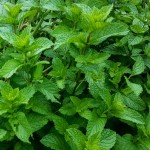 Mint – Mentha spp a huge family of plants native to every continent except South America and Antartica. They are characterized by their square stems and aggressive growth. Most are perennial through zone 4.
Mint – Mentha spp a huge family of plants native to every continent except South America and Antartica. They are characterized by their square stems and aggressive growth. Most are perennial through zone 4.
Mints are rarely grown from seed. You can buy plants or propagate by cuttings. Mints spread by runners. They should be confined to containers or grown in their own garden beds so that they won’t crowd out other plants. Mint can be grown in either sun or light shade. The leaves can be harvested at any time.
Mint leaves can be dried, but for tea they are normally used fresh. Peppermint (Mentha piperita) tea has long been used indigestion but any mint can be brewed into a tea.
Pineapple Sage – Salvia elegans native to Mexico and Guatemala, pineapple sage is a member of the salvia family. It is only hardy through zone 8. Further north, it is grown as an annual or brought inside during the winter. Mature plants reach a height of 4 to 5 feet. The bright red flowers are a hummingbird magnet. In the north, they bloom in the late autumn as the hummingbirds begin their migration south.
Pineapple sage is propagated through cuttings which root very quickly. Plants can be transplanted outside after all danger of frost. Make sure you leave at least four feet between plants and keep them well-watered. Pineapple sage requires a minimum of six hours of sun each day. To over-winter the plants, cut them back by 2/3 prior to bringing them into the house. Do not harvest the leaves during the winter.
Pineapple sage leaves are used fresh to make a pineapple flavored tea.
Rose Hips – Rosa spp actually the fruit of the rosebush, all roses make rose hips. The largest fruits are found on rugosa roses. Be careful planting rugosa roses in your landscape. They have become invasive in parts of North America. Rose hips are an excellent source of Vitamin C.
Allow the flowers on your roses to die. At their base, you will see the hip developing. The hips are ready to harvest when they turn red or orange, depending on the rose variety. To make your tea, clean the hips and slice them in half. You can remove the seeds before steeping if you wish.
Rosemary –Rosmarinus officinalis native to the Mediterranean area, rosemary is a woody perennial that is reliably hardy through zone 7. It can survive mild winters with protection in zone 6. In northern areas, rosemary should be grown in pots and brought inside once the outdoor temperatures are less than 30°F. Mature plants grown outside can reach a height of 5 feet. Rosemary is a member of the mint family but is not invasive. It is often used as an ornamental shrub because it can be pruned into hedges and topiary.
Rosemary is usually propagated by cuttings. Start your cuttings 6 weeks before your last frost date. After the last frost date, rosemary should be planted in a sunny garden and not overwatered. It can be treated similar to your lavender. Because rosemary requires a lot of sun, when brought indoors, supplemental lighting is recommended.
Leaves can be harvested year round. They are usually used fresh to make tea. It is said that drinking rosemary tea will improve your memory.
Sage –Salvia officinalis a non-invasive member of the mint family, sage is native to the Mediterranean but has naturalized throughout much of the world. It is a perennial sub-shrub that is hardy through zone 5. The plants become woody within three to four years and will need to be replaced. Mature plants reach a height of 3 feet.
Sage can be grown from seeds or cuttings. Seeds can be started indoors 1 to 2 weeks before your last frost date. Cuttings take longer and should be started 6 to 8 weeks before your last frost date. Plant your sage in a sunny, well-drained location. Sage does not like wet feet. Wait until the second year before harvesting the leaves.
Leaves can be used fresh or dried to make a soothing tea.
Stevia – Stevia rebaudiana native to the tropical areas of Central and South America, stevia is a member of the aster family. It is hardy, with protection, only through zone 8. In northern areas it is grown as an annual or brought indoors during the winter. At maturity, plants are 24 inches high.
Stevia can be grown from seed but germination is spotty. It is better to grow it from cuttings. Stevia likes conditions similar to basil: hot, wet and sunny. You can begin harvesting leaves when plants reach 8 inches. If you are not planning to bring your stevia plant into the house for the winter, harvest all of the leaves before your first frost.
Stevia is a natural sweetener that has 40 times the sweetness of sugar and is safe for diabetics. Leaves can be used fresh or dried to sweeten your herbal tea.
Thyme – Thymus vulgaris a non-invasive member of the mint family, thyme is native to the Mediterranean area. It is a small, shrubby perennial that is hardy through zone 5. Mature plants range in size from 6 to 12 inches, depending on the variety.
Thyme is difficult to grow from seed. It is usually propagated by division or cuttings. Thyme prefers a sunny location, but it can tolerate a little shade. What it can’t tolerate is over watering. Thymes are drought tolerant plants like lavender and rosemary and should be treated the same. You can harvest your thyme any time after it becomes established in your garden.
Leaves can be used fresh or dried to make a soothing tea.
Violets – Viola spp members of the extensive viola family, teas are usually made from the flowers and leaves of the Sweet Violet, Viola odorata which is native to Europe and Asia, and introduced into North America and Australasia. They are perennials that are only hardy as far north as zone 6. At maturity, violets reach a height of 4 to 6 inches depending on the variety.
Violets are spread by runners and are easily grown from seed. They are cool season plants, so seed needs to be cold stratified. It should be sown ½ inch deep, directly in your sunny garden in the fall or 4 to 6 weeks before your last frost date in the spring. Be patient! The seed may remain dormant if it was not cold stratified correctly. Eventually they will germinate. Mulch the base of the resulting plants to keep the roots cool and the plants blooming longer. Flowers and leaves can be harvested at any time once the plants become established in your garden.
Flowers and leaves can be used fresh or dried to make the quintessential afternoon cup of tea.
Yarrow – Achillea millefolium a member of the aster family, yarrow is native to Asia, Europe and North America. It is a perennial that is hardy to zone 3. Depending on the variety, mature plants grow to 6” to 36” high.
Yarrow is usually propagated by division, but can also be grown from seed. Sow your seeds indoors 6 to 8 weeks before your last frost. Plant your seedlings in your sunny garden and be careful not to overwater them. Yarrow is a drought tolerant plant. It requires very little care, thriving in poor soils and can even become invasive. Leaves can be harvested at any time once the plants become established in your garden.
Leaves can be used fresh or dried to make a bitter tasting tea that is drunk for its reputed medicinal properties.
Drying Tea Herbs – You can dry your tea herbs using one of several methods. You can hang bunches in a dark, dry spot until they are dry, use a food dehydrator, or even dry your herbs in your oven. Simply place them on parchment paper covered cookie sheets in a 100°F-110°F oven for two to three hours. Then you simply place them in an air tight container and store them in a cool, dark place with no sun exposure.
Making Herbal Tea – bring your water to a boil and transfer to a non-metal teapot. Use 2 tablespoons of fresh herbs (leaves and/or flowers), or 1 tablespoon of dried herb (leaves and/or flowers) to the pot for each cup of water, plus an extra 2 tablespoons of fresh or 1 tablespoon of dried “for the pot.” Don’t forget to use more herbs if making ice tea to allow for the extra water from the melting ice cubes.
Steep for five minutes or until the tea reaches your desired strength, strain out the herbs and enjoy!

